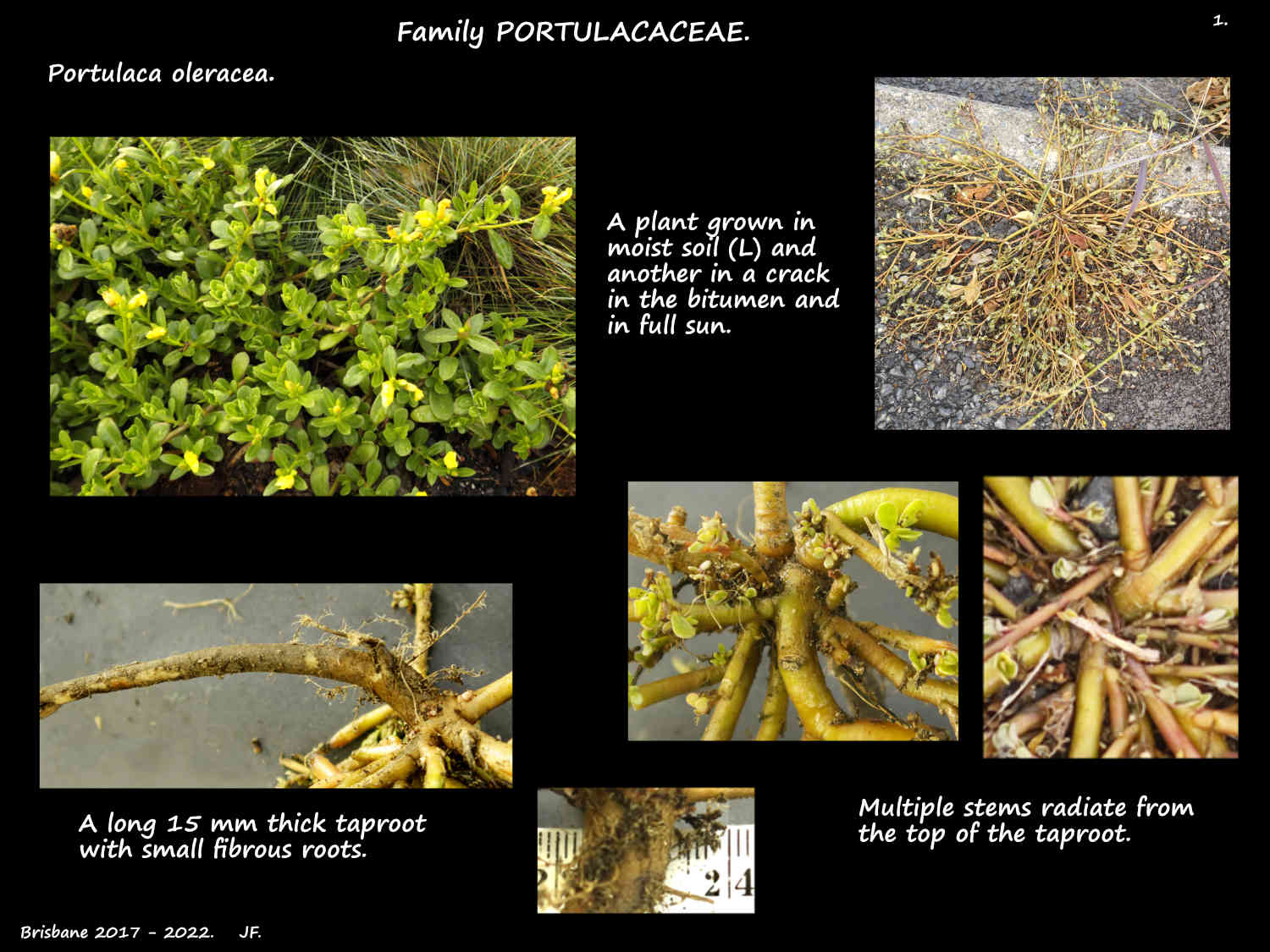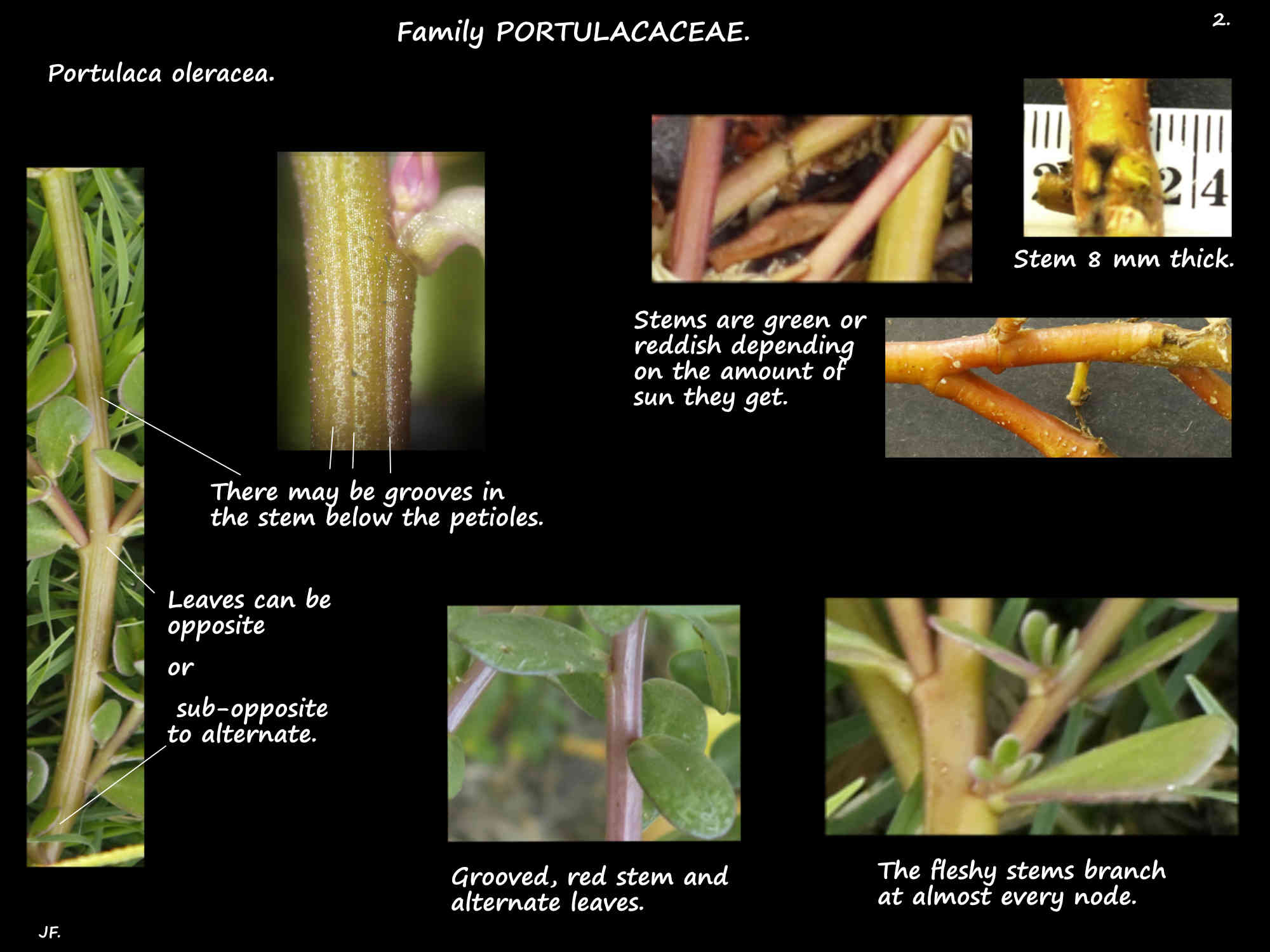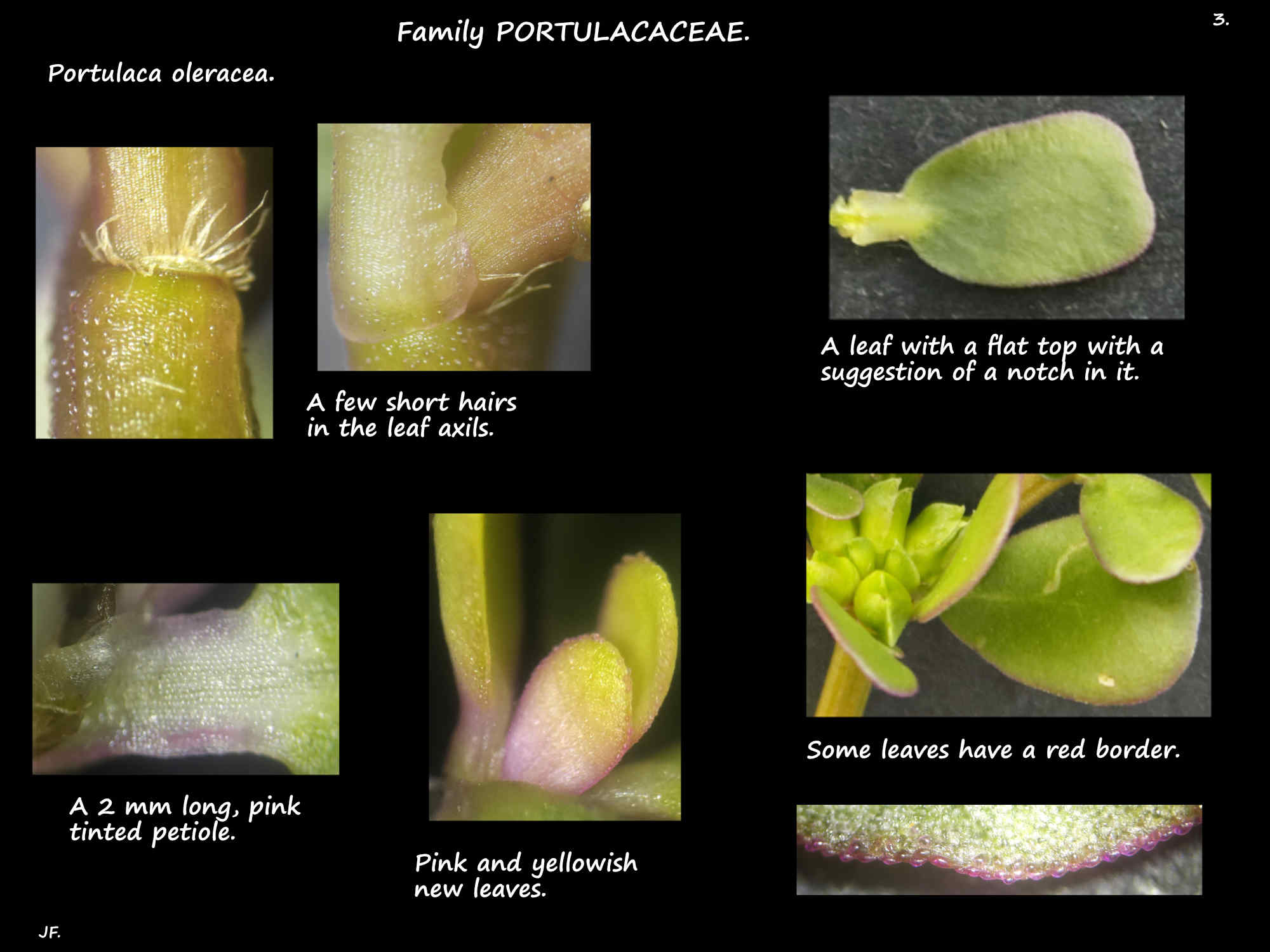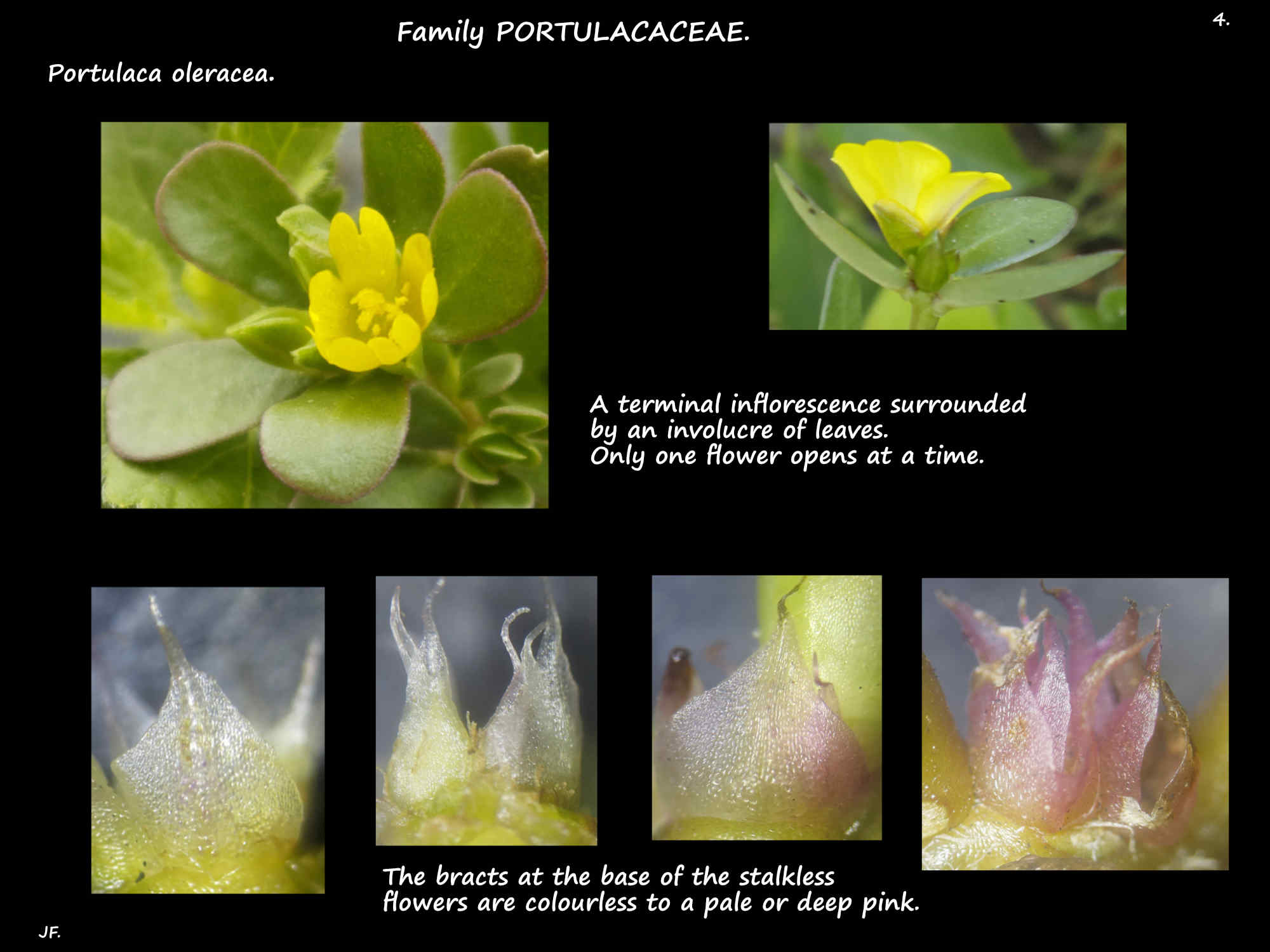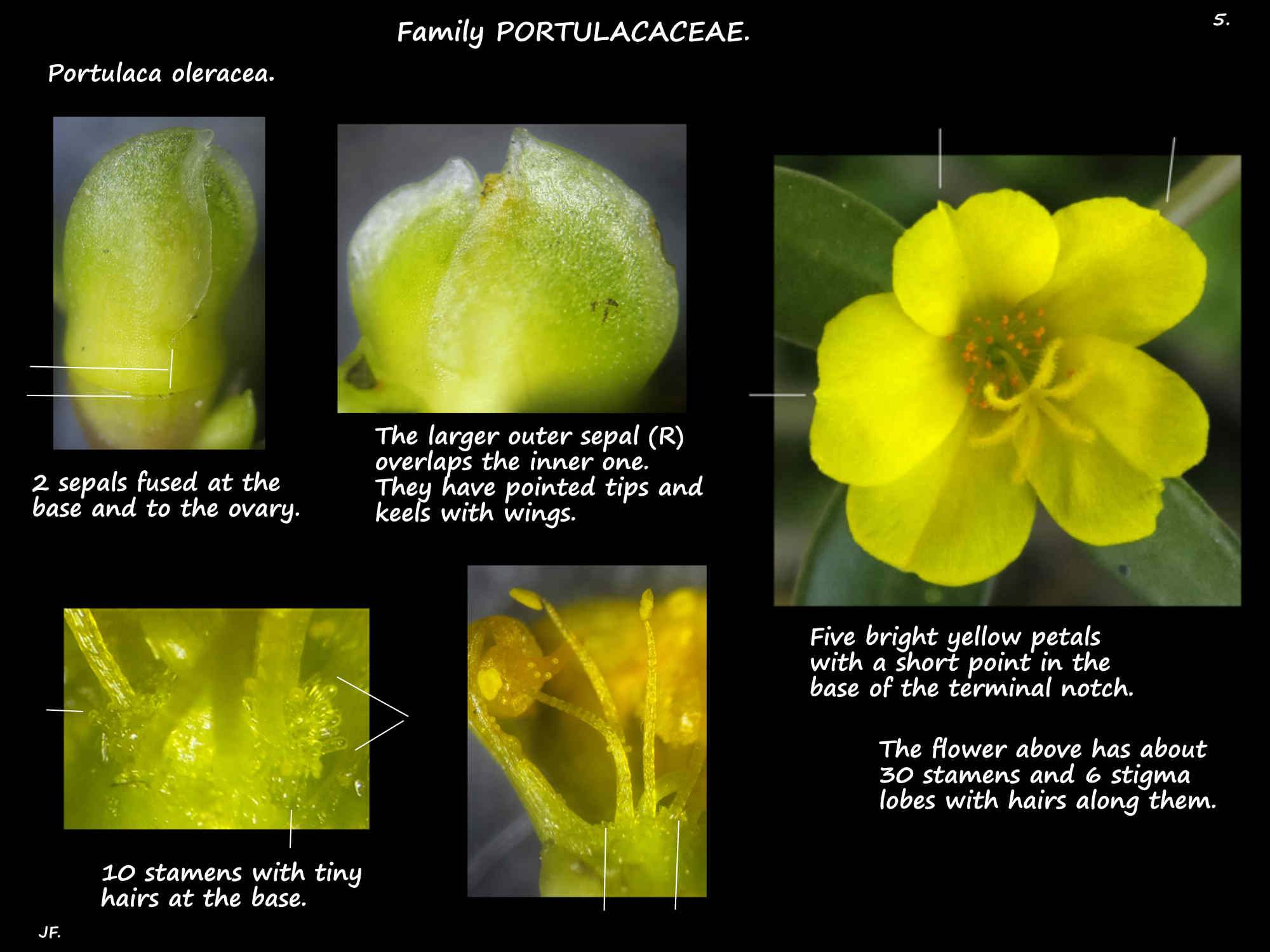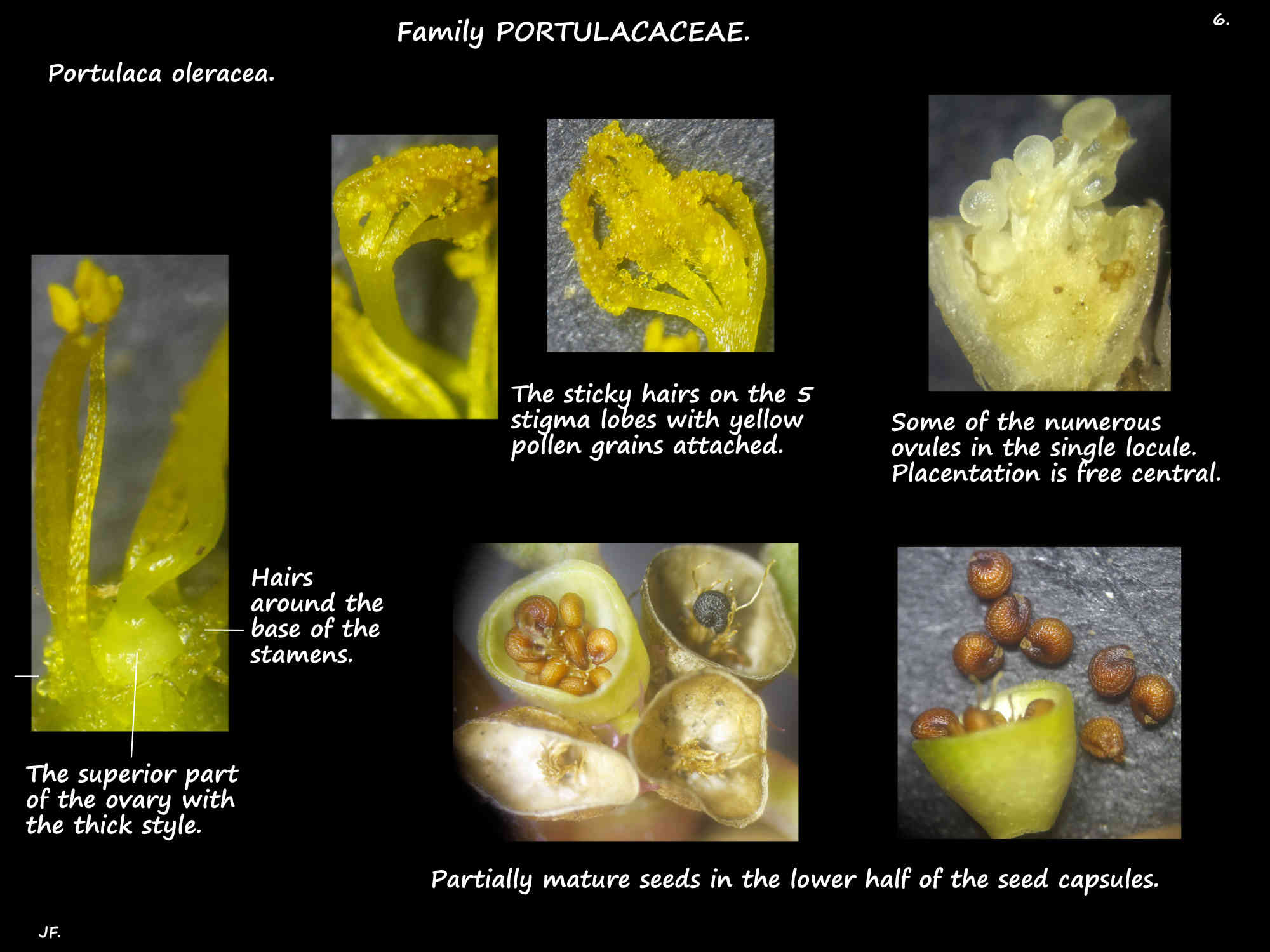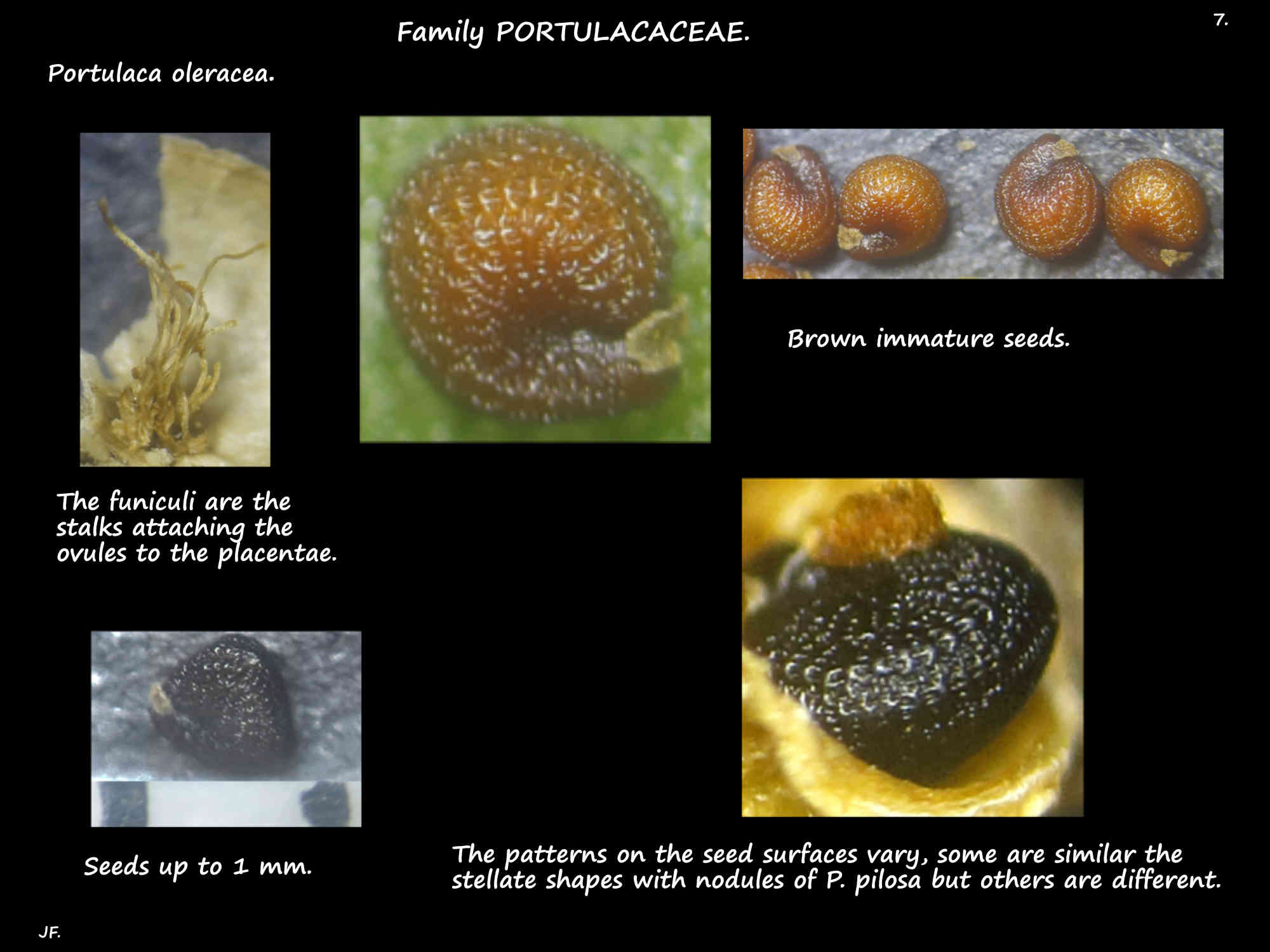Portulaca oleracea.
Common purslane, Common or Red Pigweed is a widely naturalised weed in Queensland.
It is a variable species.
From the taproot succulent stems spread outwards for up to 25 or even 50 cm.
The many branches, with a few bending upwards can form dense mats a few cms thick.
Many stem have shallow grooves running down them from below the leaf bases.
The thick, fleshy leaves can be opposite, sub-opposite or alternate in a spiral.
There is no petiole or one around 3 (1 to 5) mm long and it may be tinged with red.
The blade length varies greatly (1 to 6 cm) depending on the substrate the plant is growning in.
They are obovate or spatulate with a flattish tip that may have a shallow notch.
Stems and leaves have no hairs but there may be a few small ones in or beside the leaf axils.
The debate is still open as to whether or not they are stipules.
Stems and leaves are initially green but where exposed to the sun they may be reddish or reddish-brown.
Plants with pink, orange or light puple stems have also been seen in different surroundings.
Inflorescences are on the end of the main or side branches.
They consist of a solitary flower or a small cluster of up to 5.
The 4 (2 to 6) close terminal leaves form an involucre but they spread apart as the flowers and fruit mature.
The bisexual flowers, on a very small or no pedicel are up to 1 cm across when fully open.
There are bracts a few mms long around the base of the flowers.
With a pointed tip they are almost colourless or a pale or deeper pink.
The calyx has 2 broad-based sepals and their joined bases are fused to the base of the ovary.
The outer one, up to 5 mm long partly overlaps the inner one.
They are green with pointed tips and marked keels that may have a wing.
The wings and edges are thin and membranous.
The sepals increase in size around the growing fruit then fall off still joined together.
There are 5 (4 or 6) obovate, bright yellow petals 4 to 5 (10) mm long.
The tips may have a marked notch or 3 lobes.
Flowers open when the sun reaches them in the morning but close quickly in the shade of if handled.
Some or many flowers do not open at all but self fertilise and produce seeds.
There are 10 to 12 (6 to 20) free stamens with tufts of tiny hairs at the base.
The yellow dorsifixed anthers open inwards via long slits.
The 5 mm long ovary is half superior and half inferior with a single locule.
The numerous ovules are attached to the basal placentae by the long pale stalks or funiculi.
The 2 mm long yellow style has 3 to 6 branches with linear stigmas that have small hairs on the edges.
The fruit are ovoid circumsessile capsules around 4 mm long.
When mature the capsule splits around the centre into 2 almost equal halves.
The upper half or operculum takes the attached petals and stamens with it.
The glossy black kidney-shaped seeds, are up to 1 mm long have a smooth or sculptured surface.
The pattern on the seeds varies a lot between different populations.
It can granular, wrinkled, a flat or raised stellate pattern with or without nodules or intermediate patterns.
J.F.
